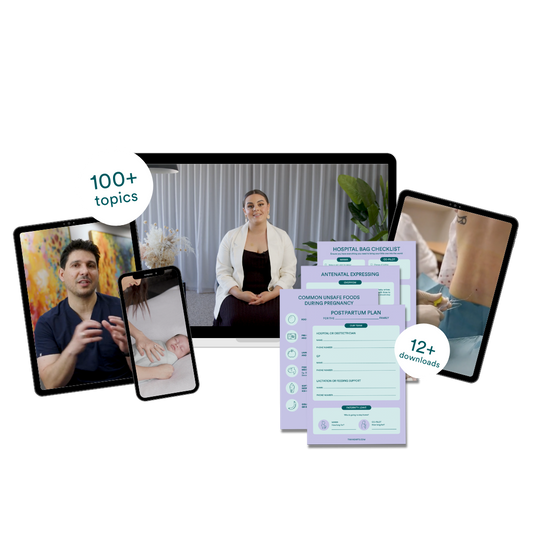In Australia, hundreds of children below the age of five are hospitalised for choking each year. As parents, one of our greatest fears is that our child is one of them.
As much as we may monitor wandering little hands and mouths, choking is a scenario that can happen easily—and escalate quickly. Of course, knowing how to act fast and administer first aid for choking is critical, but knowing how to prevent the need for choking first aid in the first place is just as—if not, more—important.
In this blog, we’ll share the most common items children choke on from coins to hot dogs, then discuss how to prevent choking hazards and where you can learn first aid for choking in Australia.
Overview Of Common Choking Hazards
Choking hazards come in many forms and can be hiding around the home, playground or even in the car—often in the most unexpected places. Here are some of the most common culprits:
Coins: Loose change can easily end up in a little mouth, especially for curious toddlers who love to explore objects with all of their senses. Anything smaller than a 20 cent coin in particular can be very easy to choke on.
Marbles: Are marbles a choking hazard? Absolutely. Small, round and with a knack for escaping the jar—marbles can easily end up in little hands and mouths. Ensure they’re kept well out of reach and always packed away after play.
Latex balloons: Deflated and broken balloons can be particularly dangerous as they can mould to the shape of a child’s airway. The latex material can also make them stickier to cough up.
Grapes: Are grapes a choking hazard? Yes. While they may be soft, the round shape and smooth skin of these small fruits make them risky. Always cut grapes lengthwise for small children to be safe.
Lollies/candy: Both hard and chewy lollies are difficult for small teeth to manage and can easily cause blockages. It’s best to avoid giving them to younger children altogether. The dentist will thank you for it, too!
Nuts: Are nuts a choking hazard for toddlers? Most people know the answer to this one is yes. Harder varieties like almonds and peanuts are particularly risky, so ensure they’re always crushed or avoid giving them to children under the age of four completely.
Hot dogs: Due to their size and shape, hot dogs are another food that present a choking risk. If a child chokes on a hotdog, it can block their airway quickly - so it’s important to slice them up properly. More on this below.
How To Prevent Choking Hazards
Prevention is your first and the best line of defence. In addition to ensuring items like the above are kept well out of reach of curious little hands, there are a couple of proactive measures to minimise the risk of choking. These include:
Toilet roll test: A quick and easy way to check whether an item could be a choking hazard for your little one is to see if it fits through the centre of a toilet paper roll. As a general rule of thumb, if it does—it’s too small for young children to play with unsupervised.
Cutting and serving food for easy swallowing: As we said above, high choke-risk foods like grapes, nuts and hotdogs should be chopped into smaller pieces – preferably lengthwise and in quarters—to make them safer for small airways.
Awareness And Prevention Are Key
It's essential for all parents to know how to administer choking first aid in Australia (if you haven’t completed a first aid course, you can register for one here). But with the right awareness and prevention strategies—ideally it won’t be needed. In addition to supervising your little one(s) if they’re around high-risk items, prevention practices include removing such items from areas they play in, ensuring you dispose of deflated balloons immediately and modifying foods to make them easier and safer to swallow.
If your child does choke on these items (or anything else!), it’s critical to start treatment immediately. We’ve created a free fridge memo to remind parents of the critical steps to take in the event of a choking emergency—you can download yours here.
Learn First Aid For Choking
If you’re not confident you can respond in an emergency or can’t answer questions like what do I do if someone is choking? Or—how do I administer chest thrusts for choking? It’s critical to learn first aid for choking in Australia.
We have a number of courses available, including our online, in-person, and private Baby and Child First Aid Courses, as well as our Introducing Solids course to help parents keep their little ones safe—and feel at ease knowing they can handle any situation.
Tiny Hearts Baby and Child First Aid courses empower parents to act calmly and confidently in times of need. From head injuries to CPR and first aid for choking, Tiny Hearts provide the knowledge to save a life.








